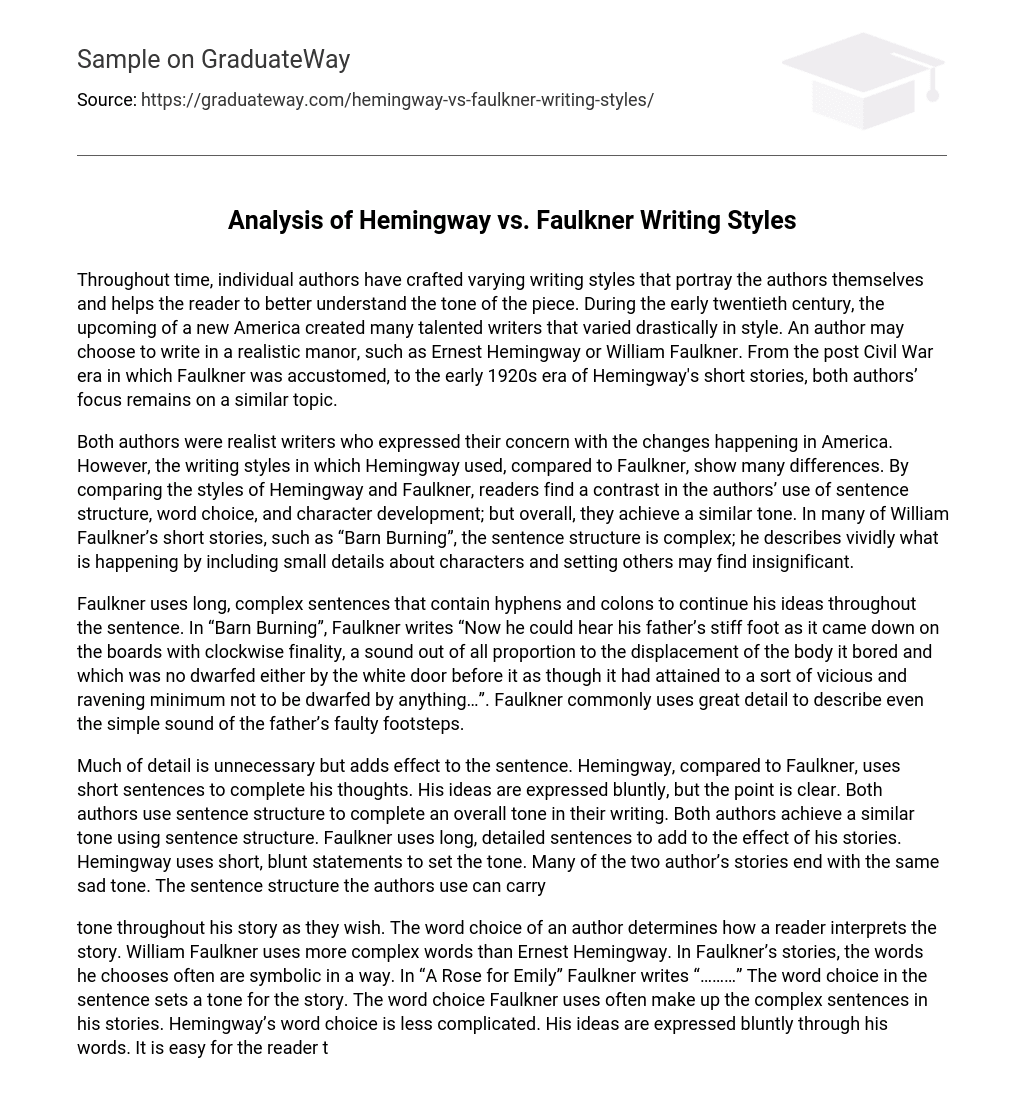Various writers have developed their own distinct writing styles which reveal their personalities and aid readers in grasping the tone of their works. In the early 20th century, a fresh America gave rise to numerous skilled writers with varied styles. Some authors, such as Ernest Hemingway and William Faulkner, chose to adopt a realistic approach in their writing. While Faulkner had a deep understanding of the post-Civil War era, Hemingway focused on the early 1920s in his short stories. Despite these differences, both authors shared a thematic emphasis.
Although Hemingway and Faulkner were both realist writers who depicted their concern about the transformations occurring in America, their writing styles vary significantly. When analyzing the styles of Hemingway and Faulkner, readers will observe disparities in sentence structure, word selection, and character portrayal. Nevertheless, despite these distinctions, both authors effectively convey a comparable tone in their works. In numerous short stories by Faulkner like “Barn Burning,” intricate sentence structures are employed to provide elaborate depictions of characters and settings that some might consider unimportant.
Faulkner utilizes lengthy and intricate sentences adorned with hyphens and colons to seamlessly develop his ideas. In his work “Barn Burning,” Faulkner crafts a sentence that illustrates this technique, stating, “Now he could hear his father’s stiff foot as it came down on the boards with clockwise finality, a sound out of all proportion to the displacement of the body it bored and which was no dwarfed either by the white door before it as though it had attained to a sort of vicious and ravening minimum not to be dwarfed by anything…” Throughout his writing, Faulkner consistently employs meticulous descriptions, even when portraying the mere sound of the father’s imperfect footsteps.
Both Hemingway and Faulkner use sentence structure to create a specific tone in their writing. While Faulkner employs long and detailed sentences to enhance the effect of his stories, Hemingway opts for short and blunt statements to establish the desired tone. Despite their different approaches, both authors ultimately achieve a similar sad tone in many of their stories. The sentence structure employed by these two writers is instrumental in conveying their intended tone.
The tone of an author’s story can be shaped by their word choice. William Faulkner prefers more complex words compared to Ernest Hemingway. In Faulkner’s stories, the words he selects are often symbolic. For example, in “A Rose for Emily,” Faulkner’s choice of words serves to establish the story’s tone. Furthermore, Faulkner’s use of complex sentences often relies on his word choices. On the other hand, Hemingway’s word choice is simpler and direct. His ideas are expressed plainly through his words, making it easier for readers to understand his stories without further interpretation.





